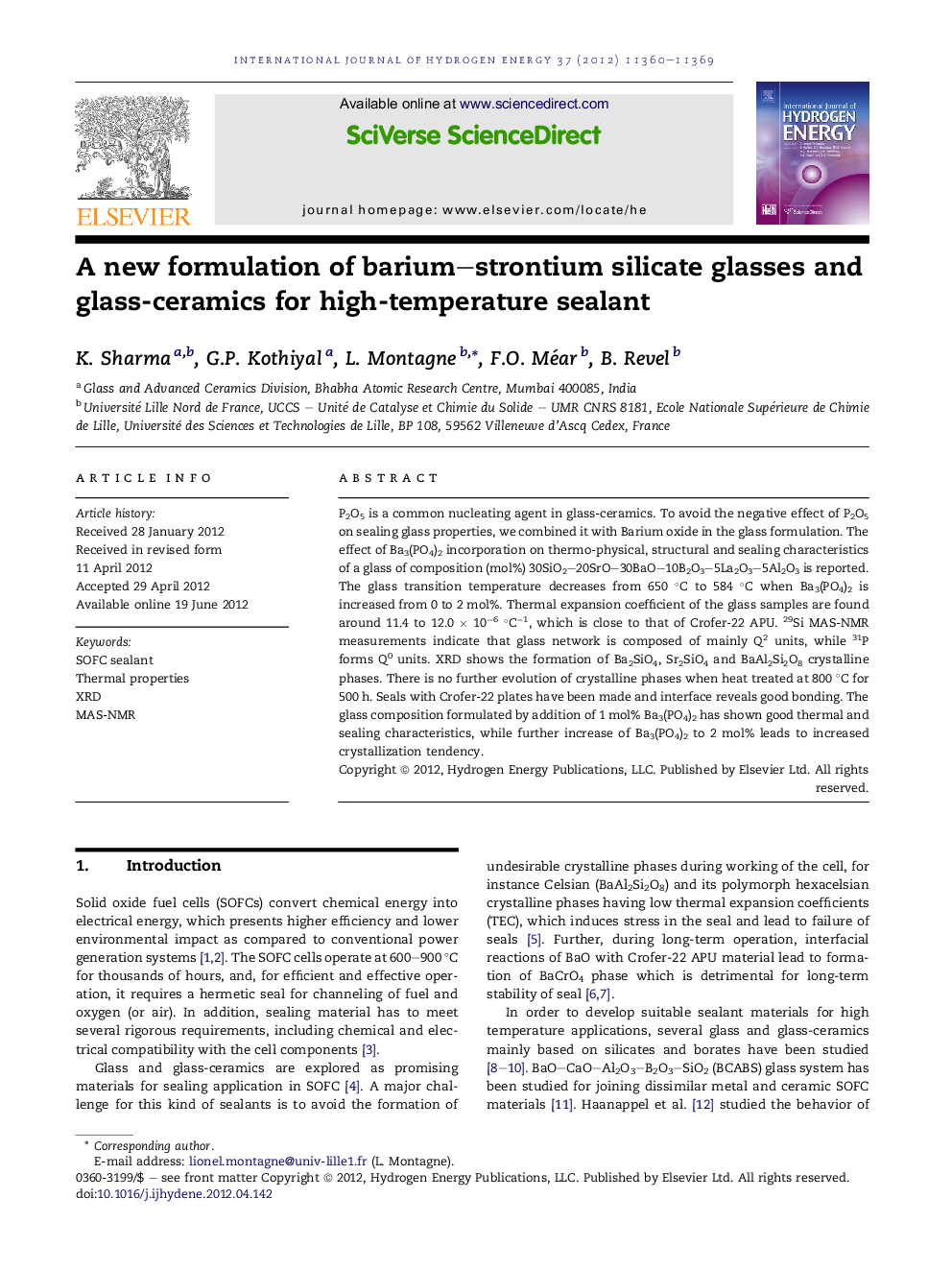| Article ID | Journal | Published Year | Pages | File Type |
|---|---|---|---|---|
| 1276299 | International Journal of Hydrogen Energy | 2012 | 10 Pages |
P2O5 is a common nucleating agent in glass-ceramics. To avoid the negative effect of P2O5 on sealing glass properties, we combined it with Barium oxide in the glass formulation. The effect of Ba3(PO4)2 incorporation on thermo-physical, structural and sealing characteristics of a glass of composition (mol%) 30SiO2–20SrO–30BaO–10B2O3–5La2O3–5Al2O3 is reported. The glass transition temperature decreases from 650 °C to 584 °C when Ba3(PO4)2 is increased from 0 to 2 mol%. Thermal expansion coefficient of the glass samples are found around 11.4 to 12.0 × 10−6 °C−1, which is close to that of Crofer-22 APU. 29Si MAS-NMR measurements indicate that glass network is composed of mainly Q2 units, while 31P forms Q0 units. XRD shows the formation of Ba2SiO4, Sr2SiO4 and BaAl2Si2O8 crystalline phases. There is no further evolution of crystalline phases when heat treated at 800 °C for 500 h. Seals with Crofer-22 plates have been made and interface reveals good bonding. The glass composition formulated by addition of 1 mol% Ba3(PO4)2 has shown good thermal and sealing characteristics, while further increase of Ba3(PO4)2 to 2 mol% leads to increased crystallization tendency.
Graphical abstractXRD, NMR and EPMA analyses show that combined addition of P2O5 and BaO to glass-ceramic compositions lead to enhanced sealing behavior and good stability at 800 °C.Figure optionsDownload full-size imageDownload as PowerPoint slideHighlights► Glass composition is formulated by the combined addition of P2O5 and BaO. ► Decrease in softening temperature is produced, enabling the seal fabrication at lower temperature. ► Crystalline phases and TEC were found stable and compatible for sealing applications. ► Interfaces of seals reveal good bonding and no adverse reactions, even after long term testing at 800 °C.
